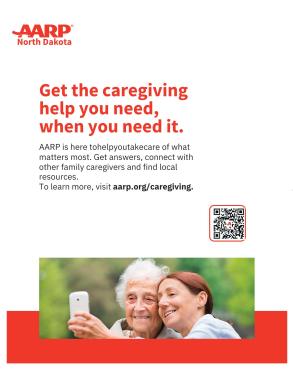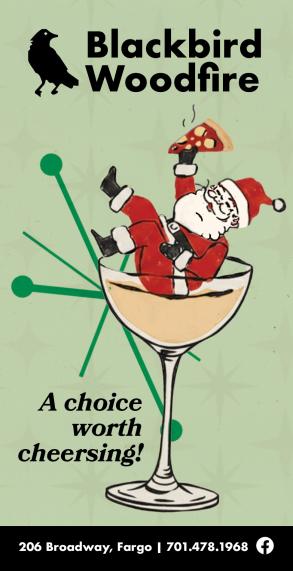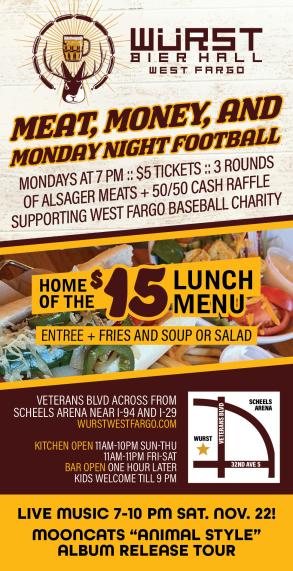All About Food | December 30th, 2021
By Sarah Wassberg Johnson
sarah@thefoodhistorian.com
It was 1998. I was in the basement of Elim Lutheran Church in Fargo, putting on a white robe and a tinsel crown. The Swedish Cultural Heritage Society of the Red River Valley (which we all just called the Swedish Society) was celebrating another Sankta Lucia Dag. At age 13, I was still one of the attendants to Lucia. There were usually a lot of us girls, although I was the oldest there that day. And there were always a few star boys, everyone in white smocks or robes. The girls got silver string belts, tinsel crowns, and to carry electric candles. The boys got pointed posterboard hats held on with elastic and spangled with tinfoil stars and a long stick with a silver star on the end. A college student was always Lucia, but this year, the girl who promised, didn’t show. As the oldest girl present, I was immediately elected to fill in, to my chagrin. And my mom’s chagrin, since I had barely dressed up for the occasion, in typical moody teenager style. But I pulled myself together and tried to walk down the church aisle wearing my crown of electric candles and the red sash with my head held high.
Sankta Lucia (also known as Saint Lucy), was an early Christian saint who was credited with relieving a famine in Dalarna, Sweden in the 18th century. She is celebrated in Sweden every December 13th (or thereabouts) with early morning or late evening parades and ceremonies and with lussekatter or Lucia buns – a saffron flavored yeast bun swirled into an S shape with raisins in the curls. But although that’s what the whole world associates with Santka Lucias Dag, that’s not what I remember. Instead, I remember what happened AFTER the Lucia ceremony – gathering in the church basement for coffee (yuck) and about a million different Scandinavian and American Christmas cookies and other treats. Scores of white-haired ladies in festive sweaters brought paper plates and Tupperware containers laden with pepparkakor, krumkake (which were always protected with crinkled waxed paper to keep them from breaking), sandbakkelse, kringle, rosettes, spritz, almond cake, and other Scandinavian treats alongside more American desserts like molasses crinkles, peanut butter blossoms, sugar cookies, Russian tea cakes, shortbreads, divinity, and fudge. A few savories like lefse, round cinnamon bread spread with Cheese Whiz and a sliced green olive (my favorite, except for the olive), pickled herring, Wasa rye crackers with butter, and super-thin homemade flatbread (which my Norwegian Grandma Eunice made every year at home) were also present. Although I didn’t know it at the time, the fact that I wanted to taste one of everything was a pretty good indicator of a lifelong obsession with food.
Scandinavian baking infused nearly every holiday I can remember. In particular I remember Grandma Eunice’s paper-thin flatbread, frosted tea ring dotted with candied cherries, and fragile spicy pepparkakor, always in star or heart shapes. Family tradition says that if you place a heart-shaped pepparkakor in your palm and press a finger in the middle, if it breaks into three even pieces, you can make a wish. Grandma’s were so thin, it didn’t take much pressure to break them. But although I have fond memories of baking at home, it was those Scandinavian community events that stick with me, and Christmas was bracketed with them – Sankta Lucia Dag before Christmas, and Tjuegondedag Knut after Christmas, in January. Both featured potlucks heavy on the Scandinavian Christmas treats.
About twelve years ago I moved back east to the Hudson Valley of New York. And while I love my life out here, one of the things I miss most from “back home” is the opportunity to be involved in my Scandinavian heritage again. Sure, there’s a Sons of Norway out here, but it’s small and located far from where I live. And it certainly doesn’t have its own building! Could I keep the food traditions up myself? I sure could, but going it alone is hard.
I study food professionally now, and so when researching historic Christmas cookie recipes for a lecture, I ran across a gem – “Recipes From Many Lands, Furnished by the North Dakota Homemaker’s Club” compiled by Dorothy Ayers Loudon, and published by Agricultural Extension Division of the North Dakota Agricultural College (now NDSU) in Fargo, North Dakota. Published as Extension Circular 77 in July of 1927, this little cookbook is a treasure trove of immigrant recipes, including Scandinavian ones. And while there is no specific Christmas section, Scandinavian baked goods feature prominently. There are twenty-six different recipes for fattigman, ten different sandbakkels recipes, and multiple recipes each for krumkake, lefse, kringle, rosettes, rice pudding, rommegrot, and others. Not to mention a whole bunch of other recipes, including cakes, breads, meats, and more. Each recipe lists the woman who submitted it and which homemaker’s club she belongs to, and her location. The recipes brought the memories of those Scandinavian community events and their groaning boards rushing back to the surface, and I got terribly homesick.
I think about the women (and occasionally some men) who baked for those events. Did they learn to bake from their parents or grandparents? Did they bake from their own heritage, or learn for a spouse? Did they hone a specialty they took pride in? Did they get joy from sharing their baking with the community, or did they just bring something because they felt obligated? Was the treat they brought a favorite of theirs, or did they make it for someone else? When they saw some teenager filling a plate, did they feel happy, or did they roll their eyes at gluttonous kids?
I’m not a white haired little old lady yet. I’m not widowed (thank goodness) and I’m not retired (sadly). So while I don’t have as much time on my hands as some of those bakers maybe did, it’s not as if I couldn’t keep the traditions. I’ve got the krumkake iron and rolling cone, the sandbakkel tins, I’ve even got a heart-shaped waffle iron. And I do make my split pea soup just like they always did for Tjuegondedag Knut. Maybe this year I’ll dig them out and do them justice, sharing my family traditions with friends, instead of just the folks back home. I don’t always agree with blind adherence to tradition, but traditions can connect us – to the past, to family, to each other.
To that end, I’m sharing two recipes with you. One is old, but new to me. A sandbakkel recipe from “Recipes From Many Lands.” The other is my Grandma Eunice’s flatbread recipe, which was published in the Elim Lutheran Church Centennial Cookbook. And while Grandma passed away a few years ago, her recipe lives on. But only someone who has experienced her baking can tell you that the flatbreads have to be so thin they practically break when you pick them up, and they have to be patterned with the weave of the floured pastry cloth she always rolled them out on.
Sandbakkelse (Swedish)
1 cup sugar1 cup butter1 egg2 cups flour
Put a thin layer into cake form and bake.
For some modern directions – cream butter, sugar, and egg together, then mix in flour. Add a ¼ or ½ teaspoon almond extract or a teaspoon of vanilla, or some ground cardamom, or some combination of all three. Press into sandbakkel tins and bake at 350 or 375 until golden brown, about 15 mins. Let cool in tins, then flip to remove cookies. If you don’t have sandbakkel tins, try muffin pans, but you’ll have to wait for them to cool before you can bake another batch!
Flat Bread
1 ¼ c. buttermilk¾ c. sweet cream½ c. sugar (scant)1 tsp. salt1 tsp. soda (scant)½ c. melted butter3 ½ c. flour
Mix together – alternate dry ingredients with liquids. Roll in whole wheat flour. Bake at 400. Roll in small balls and flatten with rolling pin. Roll thin & watch closely. Bake until slightly brown.
These are two recipes I’ll be trying my hand at this Christmas. If you don’t have a family tradition to draw upon, I encourage you to make your own. Try browsing through Recipes of Many Lands and see what catches your eye. You might even find a family name in there! And if you happen to claim some Scandinavian heritage, or you’re just interested in the traditions of the Nordic countries, I encourage you to join organizations like the Swedish Society, the Sons of Norway, Red River Danes, Red River Finns, Icelandic Klub, Daughters of Norway, and/or Saami Circle. Traditions won’t carry on and can’t be shared if there’s no one to share them with.
https://www.google.com/books/edition/Circular/tCQ3AQAAIAAJ?hl=en&gbpv=1
__________________
[Editor’s note: Sarah Wassberg Johnson is The Food Historian, an academic and public historian focusing on the intersection of food, history, and culture in America. She is an author, speaker, educator, podcaster, and blogger on all things related to food history.]
November 18th 2025
November 12th 2025
September 16th 2025
August 19th 2025
July 15th 2025
_(1)__293px-wide.jpg)



__293px-wide.jpg)
_(1)_(1)_(1)__293px-wide.jpg)